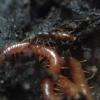I'm hoping that this colony doesn't die because this is one of the species I actually like.
- Formiculture.com
- Forums
- Gallery
- Members
- Member Map
- Chat

I'm hoping that this colony doesn't die because this is one of the species I actually like.
Nice queens. Formica are usually pretty hardy. The first year is slow, then they pick up pace.
They love almost any insect and sugar water.
"Always do right. This will gratify some people, and astound the rest." -- Samuel Clemens
I found a third one with one wing attached but it ran away after about a minute of trying to catch it, they are so fast!
I assume they slowly start laying and over the course of the early summer/mid summer lay more?
My friend has a Formic fusca colony which seems to be very similar and they laid a batch of around 11 eggs. They let those grow to pupae/large larvae and then the queen laid more.
Currently Keeping:
Trachymyrmex septentrionalis
Pheidole pilifera
Forelius sp. (Monogynous, bicolored) "Midwestern Forelius"
Crematogaster cerasi
Pheidole bicarinata
Aphaenogaster rudis
Camponotus chromaiodes
Formica sp. (microgena species)
Nylanderia cf. arenivega
0 members, 1 guests, 0 anonymous users